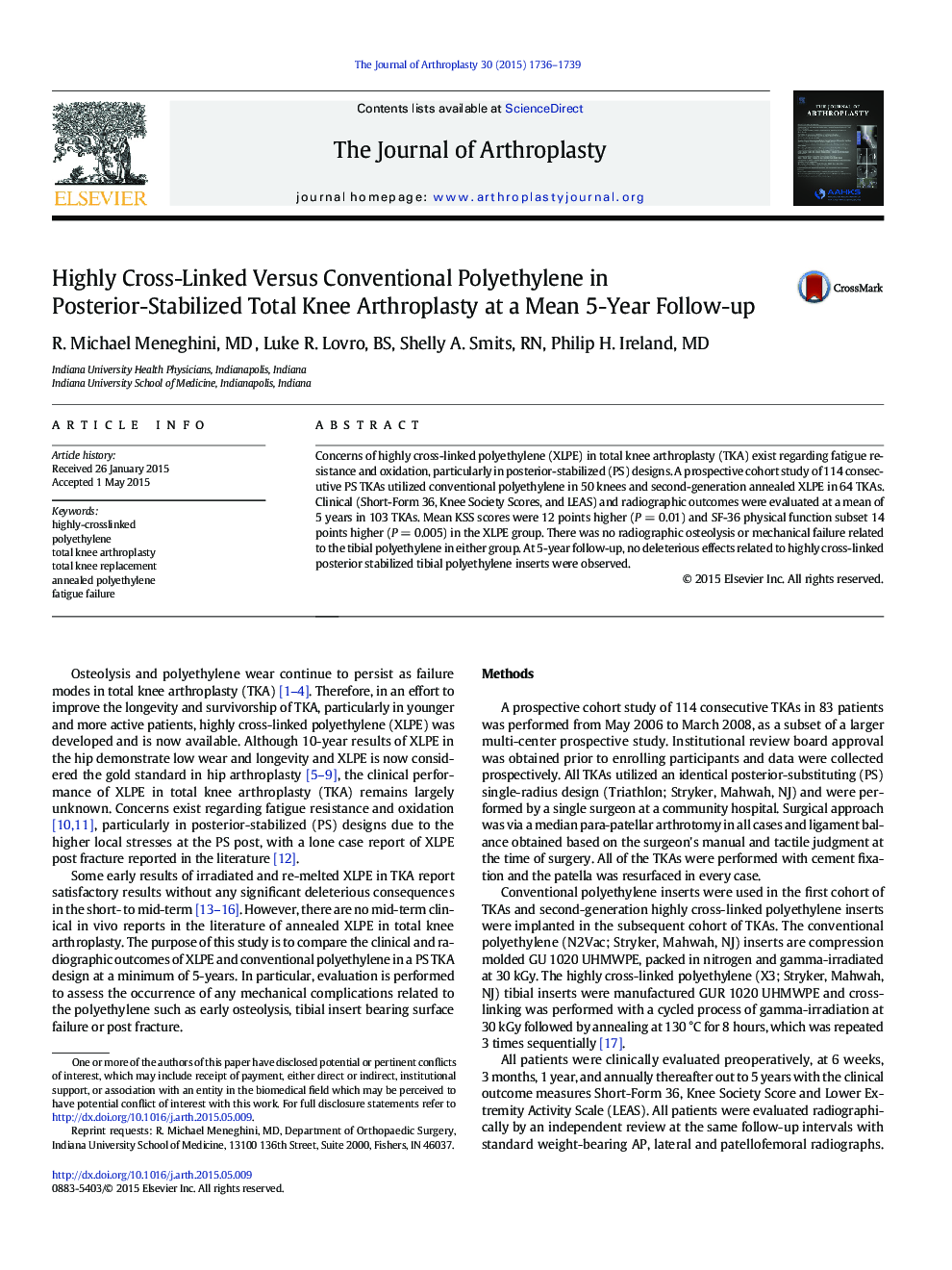| کد مقاله | کد نشریه | سال انتشار | مقاله انگلیسی | نسخه تمام متن |
|---|---|---|---|---|
| 4060165 | 1603984 | 2015 | 4 صفحه PDF | دانلود رایگان |
Concerns of highly cross-linked polyethylene (XLPE) in total knee arthroplasty (TKA) exist regarding fatigue resistance and oxidation, particularly in posterior-stabilized (PS) designs. A prospective cohort study of 114 consecutive PS TKAs utilized conventional polyethylene in 50 knees and second-generation annealed XLPE in 64 TKAs. Clinical (Short-Form 36, Knee Society Scores, and LEAS) and radiographic outcomes were evaluated at a mean of 5 years in 103 TKAs. Mean KSS scores were 12 points higher (P = 0.01) and SF-36 physical function subset 14 points higher (P = 0.005) in the XLPE group. There was no radiographic osteolysis or mechanical failure related to the tibial polyethylene in either group. At 5-year follow-up, no deleterious effects related to highly cross-linked posterior stabilized tibial polyethylene inserts were observed.
Journal: The Journal of Arthroplasty - Volume 30, Issue 10, October 2015, Pages 1736–1739
